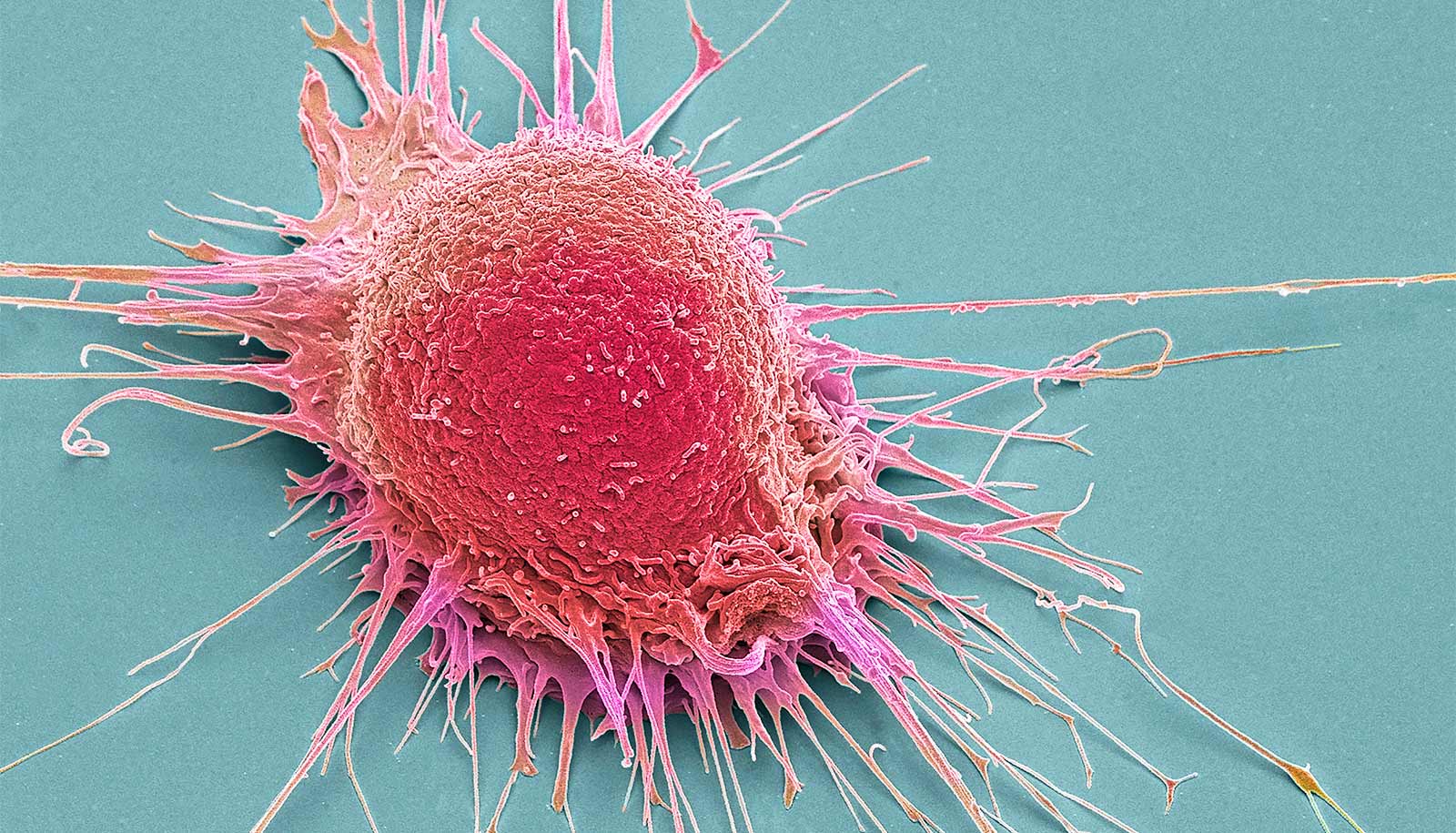A new drug combo designed to kill melanoma cancer cells travels on nanoparticles, which are several hundred times smaller than the width of a hair.
The drug, called CelePlum-777, combines a special ratio of the drugs Celecoxib, an anti-inflammatory, and Plumbagin, a toxin. With the drug, the cells have difficulty overcoming the effect of having more than one active ingredient.
“This drug is the first of a new class, loaded with multiple agents to more effectively kill melanoma cells.”
“Loading multiple drugs into nanoparticles is one innovative approach to deliver multiple cancer drugs to a particular site where they need to act, and have them released at that optimal cancer cell-killing ratio,” says Raghavendra Gowda, assistant professor of pharmacology at Penn State, who is the lead author on the study.
“Another advantage is that by combining the drugs, lower concentrations of each that are more effective and less toxic can be used,” Gowda adds.
Celecoxib and Plumbagin cannot be taken by mouth, because the drugs do not enter the body well this way and cannot be used together in the ratio needed because of toxicity to the patient.
However, CelePlum-777 can be injected intravenously without toxicity. Because of its small size, it also accumulates inside the tumors where it then releases the drugs to kill the cancer cells. Researchers report their results in the journals Molecular Cancer Therapeutics and Cancer Letters.
“This drug is the first of a new class, loaded with multiple agents to more effectively kill melanoma cells, that has potential to reduce the possibility of resistance development,” says senior author Gavin Robertson, professor of pharmacology, pathology, dermatology, and surgery. “There is no drug like it in the clinic today and it is likely that the next breakthrough in melanoma treatment will come from a drug like this one.”
Should couples learn to check each other’s moles?
The researchers reported the results of CelePlum-777 on killing cancer cells growing in culture dishes and in tumors growing in mice following intravenous injection. The drug prevented tumor development in mice with no detectable side effects and also prevented proteins from enabling uncontrolled cancer cell growth.
The Food and Drug Administration requires more research before CelePlum-777 can be tested in humans through clinical trials. Penn State has patented this discovery and licensed it to Cipher Pharmaceuticals, which will perform the next series of FDA-required tests.
National Institutes of Health; the Foreman Foundation for Melanoma Research; the Geltrude Foundation for Melanoma Research; the Penn State Melanoma and Skin Cancer Center; the J. Roland Gilbert, Mary R. Gilbert and Elizabeth A. Gilbert Memorial Fund; the James Paul Sutton Medical Research Fund; and the Penn State Chocolate Tour Cancer Research Fund funded this research.
Source: Penn State



